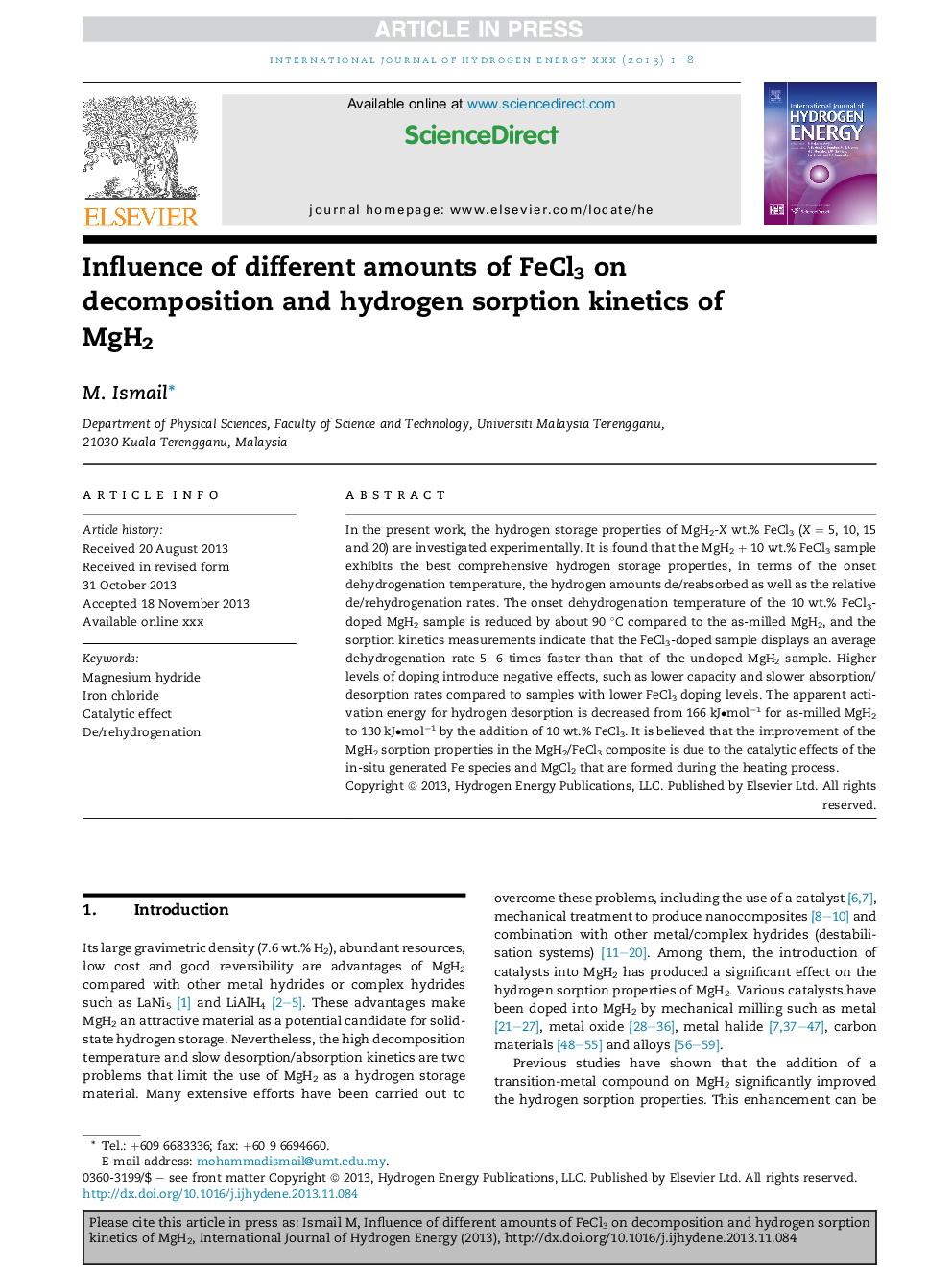| Article ID | Journal | Published Year | Pages | File Type |
|---|---|---|---|---|
| 7720350 | International Journal of Hydrogen Energy | 2014 | 8 Pages |
Abstract
In the present work, the hydrogen storage properties of MgH2-X wt.% FeCl3 (X = 5, 10, 15 and 20) are investigated experimentally. It is found that the MgH2 + 10 wt.% FeCl3 sample exhibits the best comprehensive hydrogen storage properties, in terms of the onset dehydrogenation temperature, the hydrogen amounts de/reabsorbed as well as the relative de/rehydrogenation rates. The onset dehydrogenation temperature of the 10 wt.% FeCl3-doped MgH2 sample is reduced by about 90 °C compared to the as-milled MgH2, and the sorption kinetics measurements indicate that the FeCl3-doped sample displays an average dehydrogenation rate 5-6 times faster than that of the undoped MgH2 sample. Higher levels of doping introduce negative effects, such as lower capacity and slower absorption/desorption rates compared to samples with lower FeCl3 doping levels. The apparent activation energy for hydrogen desorption is decreased from 166 kJ
- molâ1 for as-milled MgH2 to 130Â kJ
- molâ1 by the addition of 10Â wt.% FeCl3. It is believed that the improvement of the MgH2 sorption properties in the MgH2/FeCl3 composite is due to the catalytic effects of the in-situ generated Fe species and MgCl2 that are formed during the heating process.
- molâ1 for as-milled MgH2 to 130Â kJ
- molâ1 by the addition of 10Â wt.% FeCl3. It is believed that the improvement of the MgH2 sorption properties in the MgH2/FeCl3 composite is due to the catalytic effects of the in-situ generated Fe species and MgCl2 that are formed during the heating process.
Related Topics
Physical Sciences and Engineering
Chemistry
Electrochemistry
Authors
M. Ismail,
